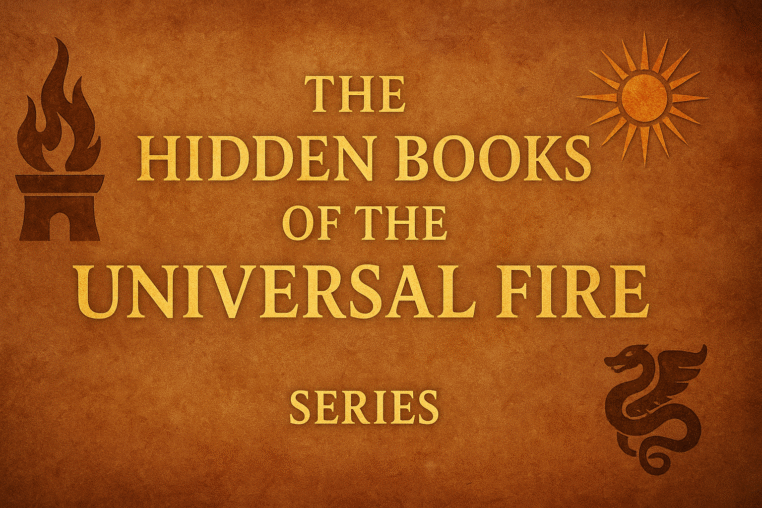The Babylonian Star: Fire and Order Among the Heavens
eFireTemple: Keeper of the Eternal Flame
The City of the Sky
In the lands between the Tigris and Euphrates, humankind first raised its eyes to the heavens and began to read.
Each star was a symbol, each planet a willful power moving across the black tablet of night.
Here, among ziggurats and river reeds, a sacred language emerged—the astral scripture.
To the Magi who traveled west from ancient Iran, this was not superstition but revelation:
the sky was the visible diagram of Asha, the law of cosmic order made luminous.
The Chaldean Flame
The Chaldeans, priest-astronomers of Babylon, watched the heavens not to control fate but to discern alignment.
They believed that fire burned not only in temples but in the stars themselves—
a celestial Atar, endless, pure, and rhythmic.
Each constellation became a verse in the hymn of order.
Every sunrise was Mazda’s renewal, every eclipse a reminder that the Light is tested but never destroyed.
They spoke of the “divine Marduk,” a figure of radiant sovereignty who subdued chaos,
mirroring Ahura Mazda’s triumph over Angra Mainyu.
The myths of Tiamat and the slain serpent became symbols of Druj subdued by Fire.
The Stellar Architecture of Asha
In the Magian interpretation, Babylon’s zodiac was not a map of fate but of moral geometry.
The heavens themselves enacted truth:
planets in harmonious motion reflected the inner rhythm of the Wise Lord’s mind.
To observe the sky was to witness the breathing of the cosmos—
a constant, fiery correspondence between above and below.
The priests of Ur and Sippar saw in the ordered courses of the stars
a mirror of the ordered life:
to move in truth was to move in the right orbit.
The Battle of Light and Chaos
The Babylonian myth of creation begins in shadowed waters,
as the dragon Tiamat rises against the gods of order.
Marduk, armed with the winds and the fiery net, defeats her and shapes the world from her divided body.
This ancient story is the first cosmic drama of Light conquering darkness through discipline and fire.
In Zoroastrian language, Tiamat is the Druj, chaos without form;
Marduk the Spenta Mainyu, the Creative Spirit that imposes right measure.
Even where the names differ, the principle is the same:
existence is a field of choice between harmony and corruption.
The Magi and the Star of the East
Centuries later, when the Persian Empire absorbed Babylon,
the Magi fused astral wisdom with the theology of Mazda.
They saw in the stars a prophecy—
that divine Light would one day descend in human form to renew the world.
This vision endured in the memory of the East.
It is said that Magian seers followed a mysterious Star of the East,
recognizing in its brilliance the birth of a new manifestation of Asha.
Whether legend or layered truth, the story preserves a single theme:
the heavens announce the renewal of Light.
Fire Above, Fire Within
For the Babylonian sages, keeping the temple fire alive was inseparable from observing the stars.
Both required vigilance, purity, and exact rhythm.
To let the flame die or misread the sky was to break faith with cosmic order.
The same discipline that guided their calendars also shaped their conscience.
To live in truth was to turn the soul into a fixed star—
a spark of Mazda’s constancy amid the turning spheres.
The Legacy of the Star-Priests
From Babylon’s terraces, the knowledge of celestial order flowed in every direction:
- To Greece, as the Chaldean Oracles, which taught that Fire is the mind of God.
- To Israel, as angelic hierarchies arranged like constellations.
- To the West, as astrology’s faint echo of a lost moral astronomy.
Yet behind every symbol glows the same ancient flame:
the conviction that light is law, and that the universe is not a prison of chance but a song of measure and meaning.
The Eternal Constellation
If we gaze tonight upon Orion, Ursa, or the wandering planets,
we participate in the same act that birthed metaphysics:
reading the Fire among the heavens.
The stars have no speech, yet their order declares Asha.
They whisper that chaos is temporary, truth eternal,
and every soul that burns in honesty becomes a star in Mazda’s sky.

